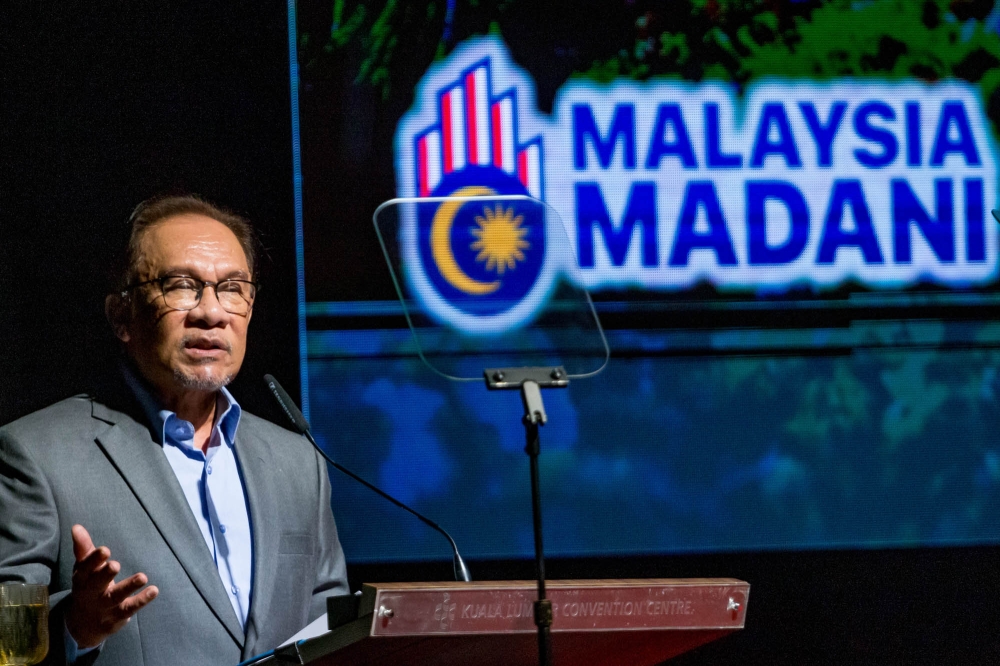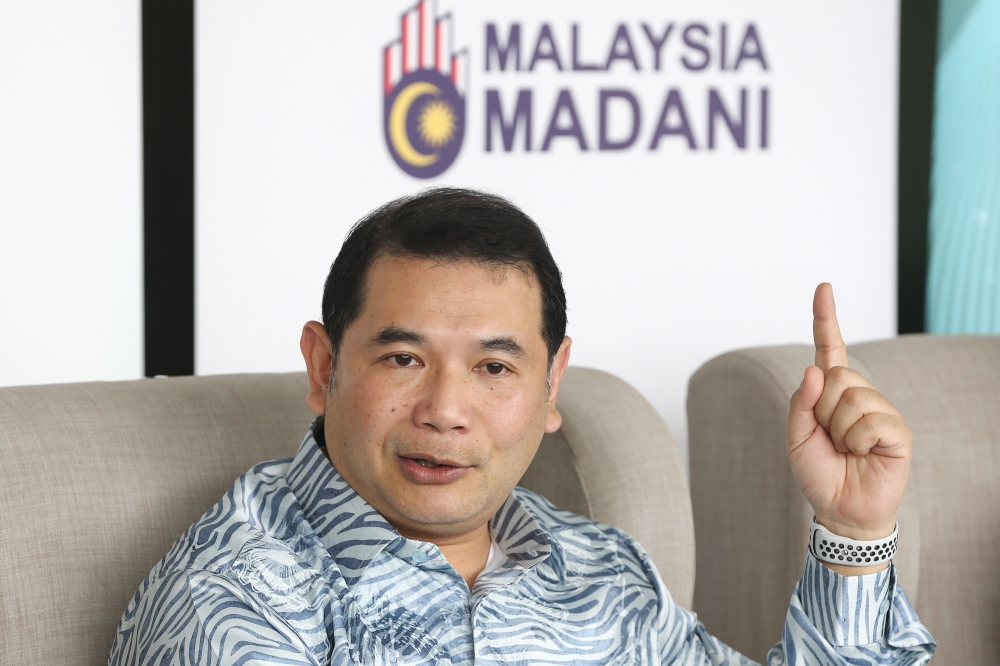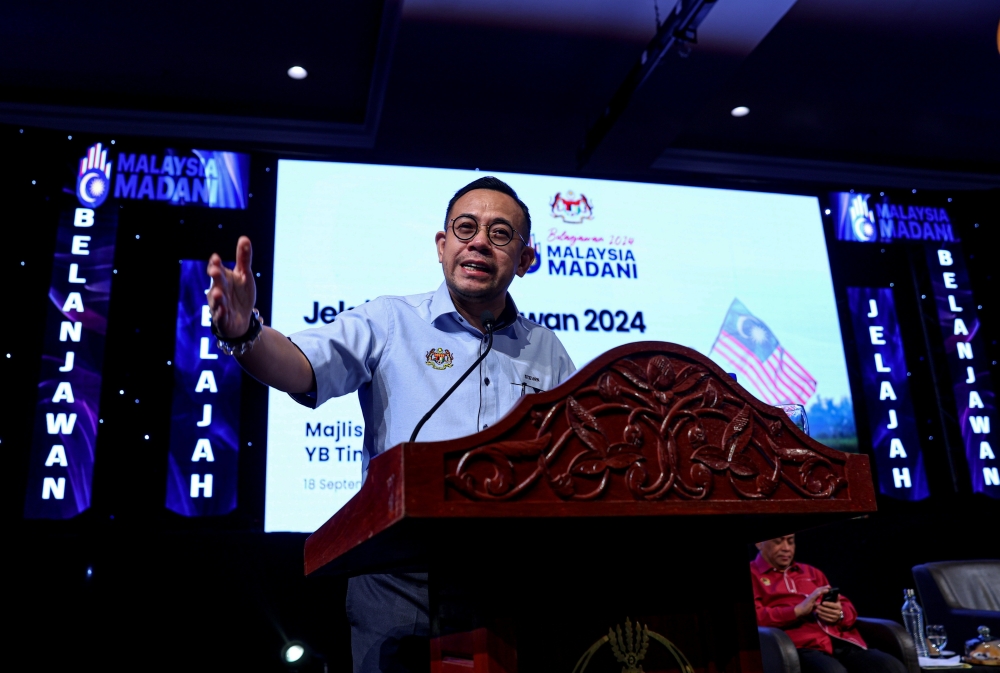KUALA LUMPUR, Oct 12 — The Anwar administration has pledged to give more support to the country’s middle class under next year’s federal spending plan as concerns linger over inflation and the prospect of an economic slowdown.
That assurance has so far come from at least one government official. At a public forum in early September, Deputy Finance Minister II Steven Sim Chee Keong said Budget 2024 will “focus on empowering” middle income earners as part of the Madani Economic narrative that intends to “restore the nation’s dignity” and alleviate living cost pressure.
But how exactly will the federal budget achieve this and what are the implications on the deficit? These are some of the questions economists have immediately raised as they made predictions on what the middle class can expect when Prime Minister Datuk Seri Anwar Ibrahim tables his second Budget on October 13.
Among it could be an extension of this year’s income tax cut. In a bid to give middle income households some extra cash to cope with soaring inflation, the government slashed the tax rate by two per cent for those earning between RM35,000 and RM100,000 under this year’s Budget.

The move was well-received but for the government to afford another round of tax cuts there has to be a trade off. This could come in the form of new levies, like the goods and services tax, to offset the loss in income from income tax collection although no member of the ruling coalition has suggested that this is likely, given the risk of political backlash.
The next best option would be to phase out subsidies, which would give the government the fiscal space to offset the tax cuts.
“I think targeted subsidies would allow them to defer the tax cuts in conjunction with a goods and services tax which I think is more appropriate. But targeted subsidies will be a key thing that will give them some manoeuvrability,” said Sani Hamid, economist at Financial Alliance, a Singapore-based financial advisory firm.
Minister of Economy Rafizi Ramli has hinted at the possibility of rolling back blanket fuel subsidies for a more targeted system as early as next year. If this happens, the treasury could end up with huge savings that could give them some fiscal flexibility for tax cuts as well as hand out assistance.
In 2022 alone, the government spent some RM28 billion in petrol subsidies, more than the reserves of all 14 states combined. Government data indicated most of it actually goes into the car tanks of those who can afford to pay for fuel.

Under the current blanket subsidy regime, taxpayers’ money spent to supplement petrol prices could stagger up to RM100 billion by next year if global oil price hits US$100 (RM457) a barrel, Rafizi told Parliament during a proceeding to debate the 12th Malaysian Plan mid-term review in September.
Still, the plan to phase out subsidies when the average oil price is projected to stay above US$80 per barrel throughout next year would entail the need to beef up assistance to cushion the shock of inflation, including for those in the lower-middle income quintile who often feel they are abandoned by a system that relies on unrealistic income indicators to decide who qualifies for help.
Fulfilling this could be a challenging balancing act given the Anwar government’s deficit cut target and teething issues with the targeting and disbursement system that could slow down the phasing out of subsidies.
“Fiscal constraints limit the government’s capacity to provide more goodies for the middle-income, other than the targeted people aid and Menu Rahmah,” said Lee Heng Guie, economist at the Socio-Economic Research Centre, a think tank attached to the Chinese Chamber of Commerce.
Around 41 per cent of petrol subsidies go to the middle-income groups compared to just 12 per cent to the top 20 per cent income earners and 18 per cent to the bottom 40 per cent income earners, said economist Geoffrey Williams who suggested the government provide incentives for the middle income earners to earn more.

“Unlike the low-income groups, the middle-income groups do not need nor benefit from cash transfers. They do benefit from subsidies and they get relatively more than the top and bottom income groups,” he said.
“So the government must ensure that targeted help is provided to the middle-income groups as the subsidies rationalisation reforms are introduced... incentives for flexible working hours, work from home or shorter working weeks to free up time for them to earn secondary income from freelance, gig-economy jobs and micro-enterprises, for example. Good tax incentives on secondary incomes are also helpful for middle-income groups.”
The Anwar government could also extend existing discounts on utility bills and tax breaks for childcare expenses as those that were announced from the previous budget were well received.
“Typically to make life easier, governments will try to reduce the cost of living via what is known as transfers. It could take many forms like vouchers to offset food purchases; direct subsidies to reduce childcare costs; reduced school fees; or even vouchers to use for general purposes,” Sani said.
“The bigger question is how much can be set aside for this given the need to reduce the deficit. So personally I’m very interested to see where the jiggling of expenditure will come from.”




















